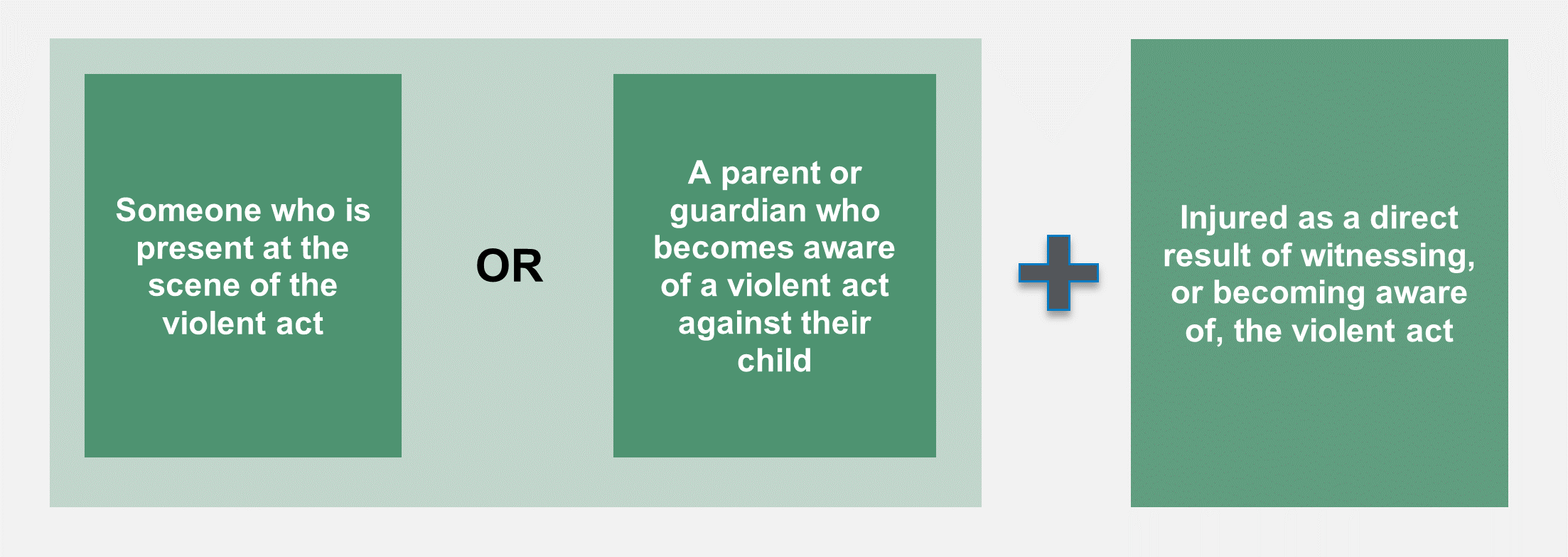Secondary victim eligibility
A person who is present at the scene of a violent act and who is injured as a direct result of witnessing that act is a secondary victim. Parents or guardians who are injured as a result of subsequently becoming aware of a violent act committed against their child are also secondary victims.
Secondary victims must also satisfy the other eligibility requirements, including that their application is made within the time limits and the violent act was reported to police.
The FAS will consider the evidence provided in the application and other evidence (such as information from Victoria Police) to establish that the person is a secondary victim.

The different types of secondary victims[8] are:
Victim type: | A person who witnesses a violent act |
Requirements:The person must:
Examples:Lucy was with her sister when her sister was physically assaulted during a night out at a club. Lucy is affected by witnessing the assault on her sister and has developed anxiety. Lucy is a secondary victim as she witnessed her sister being assaulted and developed an injury (anxiety) because of this. | |
Victim type: | A parent or guardian of a child who is a victim of a violent act |
Requirements:The child must be under the age of 18 at the time of the violent act and be eligible as a primary victim. [9] The parent or guardian must be injured as a direct result of becoming aware of the violent act against the child. Recommended evidence Applicants who are a parent or guardian of a child who is a primary victim of a violent act are recommended to provide one of the following documents as evidence of their relationship to the primary victim:
A parent or guardian is someone who in relation to that child:
A parent or guardian must become aware of the violent act after it occurred. This means that if a parent or guardian was aware of, or suspected the violent act was happening against their child at the time, and were in a position to intervene but did not, they are not eligible as a secondary victim. This does not apply when the parent or guardian was also a victim themselves. Examples:Colin is Ava’s step-father, and Ava is 15 years old. While away on a school trip, Ava was sexually assaulted by an unknown older man. When Colin learnt about the attack on Ava, he developed depression and suffers anxiety whenever Ava leaves the house. Colin is a secondary victim as he is Ava’s parent and he was injured after becoming aware of the offences committed against her. | |
Footnotes
[8] Section 13 of the Act.
[9] Section 13(2)(c) of the Act.
[10] See definition of ‘parent’ at section 3 of the Act.
Updated

